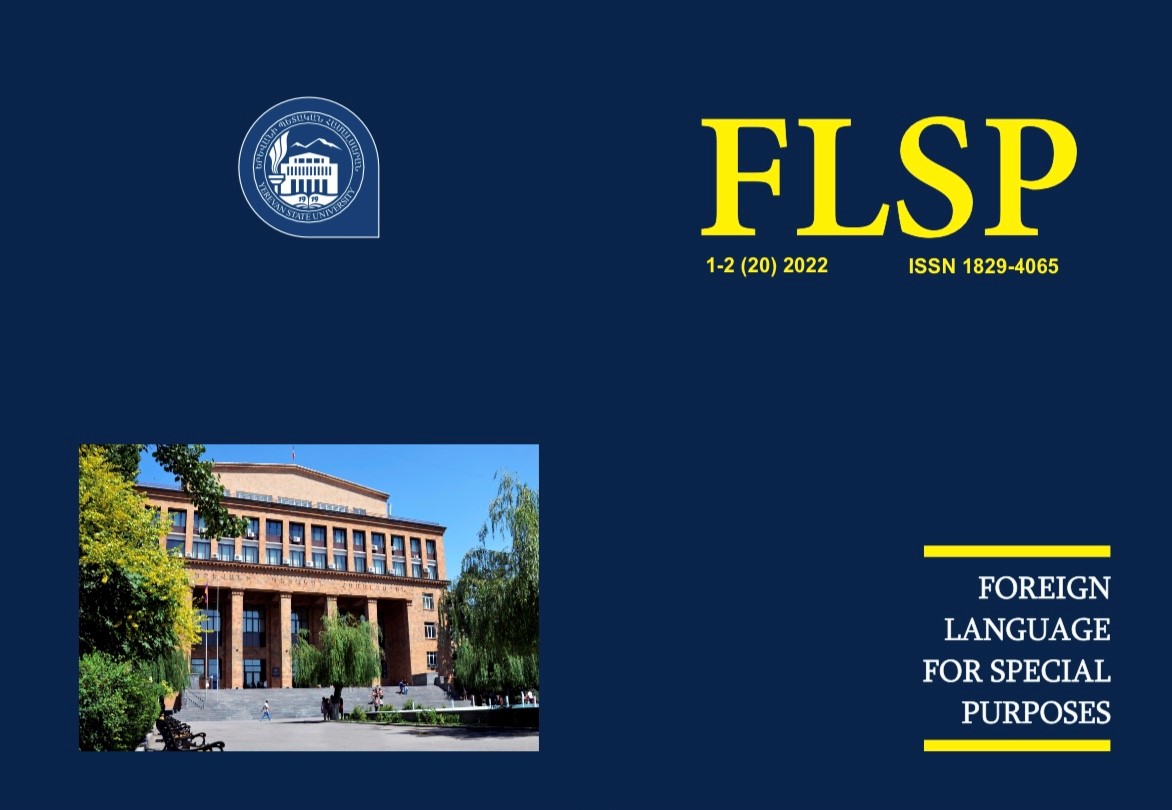CRITICAL THINKING SKILLS AS AN INTELLECTUAL ABILITY WITHIN THE FRAMEWORK OF EFL TEACHING AT UNIVERSITY
DOI:
https://doi.org/10.46991/flsp.v20i1-2.8959Keywords:
critical thinking, analytical thinking, Bloom's taxonomy, creativity, workplace, curricula, analyze, evaluate, collaborate, communication, collaboration, educationAbstract
The ability to think critically has been important at all times, but in the 21st century, when the world has entered a period of global change, when constantly changing conditions require the ability to solve emerging innovative and non-standard problems, critical thinking is inevitable.
The main goals of teaching are the formation of creative and critical thinking, the ability to use the information received and apply knowledge in practice in various situations, thus, allowing a specialist to be successful in modern society.Today, no one doubts that students should be involved in research and creative activities in order to understand, invent, master new things, express their thoughts, make decisions, be able to critically evaluate the reliability, accuracy of something; i.e. take a critical look at any situation in general.
References
Atkinson D. (1997), A Critical Approach to Critical Thinking. TESOL Quarterly, 31 (1), 71-94.
Black S. (2005), Teaching Students to Think Critically. The Education Digest, 70(6),
p.
Bloom S. B. (1956), Taxonomy of Educational Objectives. Handbook 1: Cognitive Domain, 2nd edition. Addison-Wesley Longman Ltd., 206 p.
Bowerman M., Levinson, S.C. (2001). Introduction. In M. Bowerman and S. C. Levinson (eds.), Language Acquisition and Conceptual
Development,. Cambridge: Cambridge University Press, pp. 1-16.
Burge B. E. (2012), Starbird Michael, The 5 Elements of Effective Thinking. Princeton University Press, 157 p.
Cassel R. N, Kolstad R. (1998), The Critical Job-Skills Requirements for the 21st Century: Living and Working with People. Journal of Instructional Psychology, 151 p.
Cummins J. (1994). The Role of Primary Language Development in Promoting
Educational Success for Language Minority Students. In C. F. Leyba (Ed.), Schooling and language-minority students: A theoretical framework, 2nd ed., pp. 3- 46.
Duron R., Limbach, B., Waugh W. (2006). Critical Thinking Framework for any Discipline. International Journal of Teaching and Learning in
Higher Education, 17(2), pp. 160-166.
Facione P. A. (2000). California Critical Thinking Skills Test: Form 2000. Millbrae, CA: Insight Assessment.
Hanratty L. (2012), Great Debates – 24 of the Most Important Questions in Modern Society for Teachers of ESL and EAP. TEFL Ideas, 310 p.
Jackson D., Newberry P. (2015), Critical Thinking: A User’s Manual, 2nd edition. Wadsworth Publishing, 368 p.
Moore B. N., Parker R. (2008), Critical Thinking. McGraw-Hill Education, 11th edition, 512 p.
Northege A. (2005), Adult Learning. Pretoria: University of South Africa, 64 p.
Richard P., Linda E. (2008), The Miniature Guide to Critical Thinking Concepts and Tools, Foundation for Critical Thinking Press, 27 p.
Tapper J. (2004). Student Perceptions of How Critical Thinking is Embedded in a Degree Program, Higher Education Research and Development, 23/2, pp. 199-222.
Williams M., Burden R. L. (1997). Psychology for Language Teachers: A Social Constructivist Approach. UK: Cambridge University Press, 391 p.
Downloads
Published
Issue
Section
License
Copyright (c) 2022 Foreign Languages for Special Purposes

This work is licensed under a Creative Commons Attribution-NonCommercial 4.0 International License.
Creative Commons Attribution-Non-Commercial (CC BY-NC). CC BY-NC allows users to copy and distribute the article, provided this is not done for commercial purposes. The users may adapt – remix, transform, and build upon the material giving appropriate credit, providing a link to the license. The full details of the license are available at https://creativecommons.org/licenses/by-nc/4.0/

